Low-water borders can cut your water consumption by up to 50% while creating stunning landscape features. You’ll save thousands of gallons annually and reduce maintenance needs with drought-tolerant plants that attract beneficial wildlife. These borders enhance soil health, prevent erosion, and require fewer chemicals than traditional landscaping. By grouping plants with similar irrigation needs and using permeable materials, you’ll create defined boundaries that conserve resources while boosting your yard’s visual appeal. Discover how these sustainable edges transform ordinary boundaries into ecosystem-supporting showpieces.
7 Second-Level Headings for “Why Choose Low-Water Borders For Your Yard?”
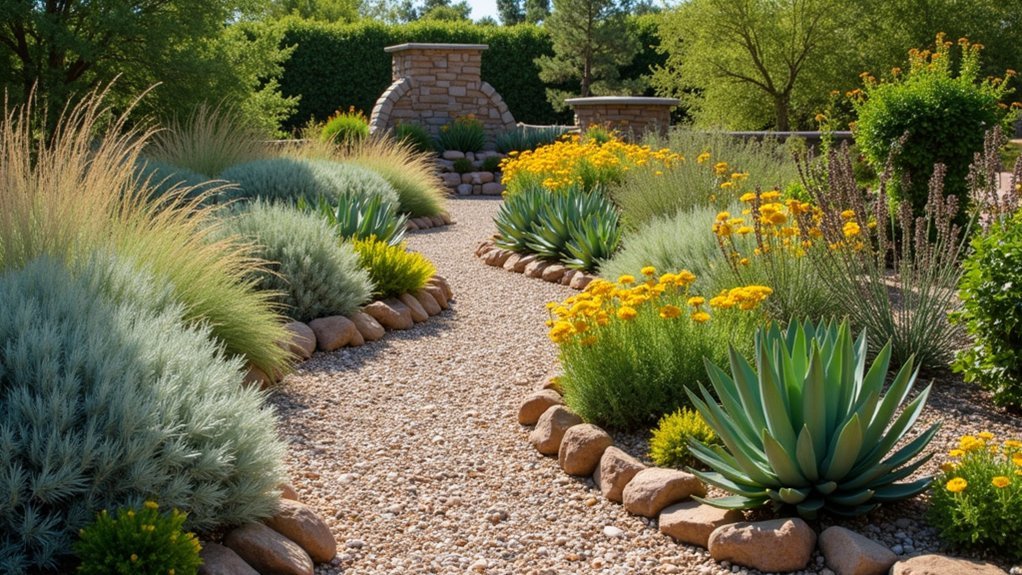
How often have you watched your water bill climb during hot summer months? Low-water borders offer an elegant solution to this common problem.
Save water, save money, beautify your yard—all with stylish low-water borders.
When planning your article about why homeowners should choose low-water borders, consider these essential second-level headings: “Environmental Benefits of Water Conservation,” “Drought-Tolerant Plants That Thrive in Border Settings,” “Reducing Landscape Maintenance Costs,” “Creating Wildlife-Friendly Habitats with Native Plants,” and “Smart Design Principles for Permeable Borders.”
These headings will guide readers through the practical advantages of installing borders that conserve water while still creating beautiful yard features.
Each section can explore how these specialized borders not only reduce water consumption but also improve drainage, support local ecosystems, and dramatically decrease the time and money you’ll spend on yard maintenance.
Environmental Benefits of Drought-Resistant Border Plants
Your drought-resistant border plants will considerably reduce your water consumption by up to 50% compared to traditional landscaping options.
Beyond conserving precious water resources, these resilient plants create essential habitats for local pollinators, birds, and beneficial insects that strengthen your garden’s ecosystem.
You’ll notice increased butterfly and bee activity as native drought-tolerant species provide food sources and shelter while requiring less maintenance and fewer chemical interventions.
Water Savings Maximized
While many homeowners focus on the aesthetic appeal of border plants, drought-resistant varieties offer remarkable environmental benefits that extend far beyond their visual charm.
By implementing low-water borders in your yard, you’ll reduce water usage by up to 50% compared to traditional garden plants, translating to thousands of gallons saved annually.
Drought-tolerant plants create a natural solution to water conservation that’s especially valuable in regions facing scarcity.
These resilient options help conserve local water resources while requiring less frequent irrigation. Their deeper root systems improve soil health by enhancing water infiltration and reducing erosion and runoff.
You’ll not only enjoy significant water savings but also lower maintenance costs, as these plants typically need less care and replacement than their thirstier counterparts.
Wildlife Habitat Creation
Beyond water conservation, drought-resistant border plants transform your yard into a vibrant ecosystem teeming with life. When you incorporate native low-water plants into your drought-tolerant landscape, you’re creating essential wildlife habitat for pollinators and birds that strengthen your local environment.
| Wildlife Type | Benefits | Plant Examples |
|---|---|---|
| Pollinators | Natural pest control, improved garden yield | Lavender, Salvia, Echinacea |
| Birds | Seed dispersal, insect management | Coneflower, Yarrow, Penstemons |
| Beneficial Insects | Pest reduction, soil health | Thyme, Rosemary, Oregano |
| Small Mammals | Seed distribution, soil aeration | Grasses, Shrubs, Wildflowers |
Your pollinator garden does double duty—conserving water while supporting biodiversity. The reduced need for chemicals means cleaner runoff into local waterways, protecting aquatic ecosystems while your yard buzzes with beneficial wildlife activity.
Top Native Plants for Creating Natural Low-Water Boundaries
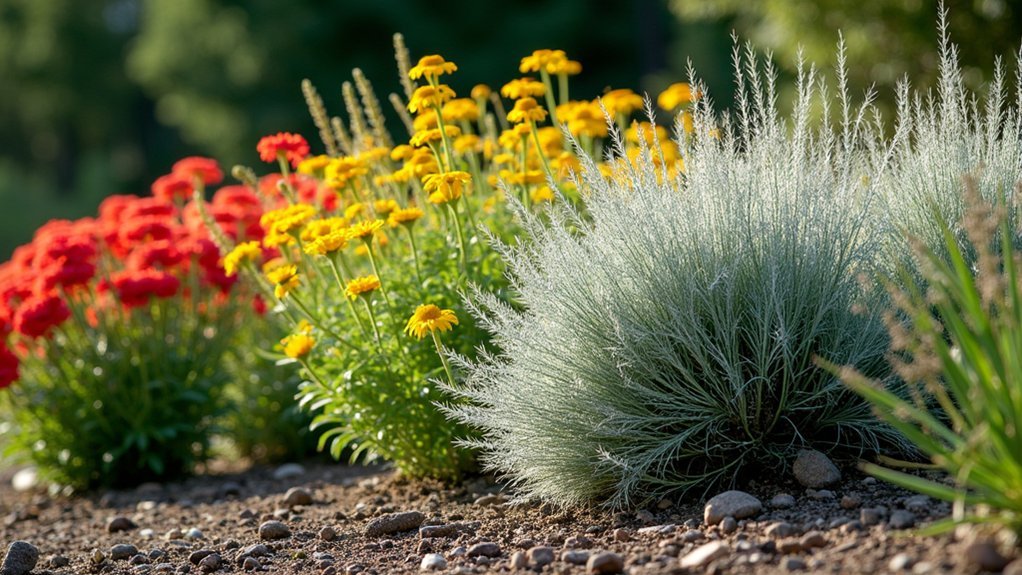
Five exceptional native plants stand ready to transform your yard borders while dramatically reducing water consumption.
Lavender creates stunning low-water boundaries while attracting vital pollinators to your drought-tolerant garden. Pair it with vibrant Salvia species that thrive with minimal irrigation once established.
Blue Fescue adds texture and visual interest, requiring almost no maintenance while enhancing moisture retention in your border soil.
For color that persists through dry conditions, incorporate Blanket Flower (Gaillardia), which supports local wildlife while withstanding extended dry periods.
Finally, consider structural elements like Agave or Yucca—their deep root systems access subsurface moisture, eliminating the need for supplemental watering.
You’ll create beautiful, sustainable borders that conserve resources while celebrating your region’s native beauty.
Design Principles for Water-Efficient Garden Edges
Creating effective water-efficient garden edges depends on understanding key design fundamentals that balance aesthetics with practical conservation. When planning low-water borders, group plants with similar irrigation needs together to optimize watering efficiency and promote healthier growth.
Incorporate permeable materials like gravel or stone in your garden edges to improve drainage, particularly in high-rainfall areas. These materials prevent water pooling while creating defined boundaries for your landscape.
Choose drought-tolerant plants that are native to your region—they’ll require less maintenance and thrive with minimal watering since they’re adapted to local conditions.
Finally, apply organic mulch throughout your borders to retain soil moisture, suppress weeds, and enrich your soil as it breaks down. This simple addition creates a protective layer that markedly reduces water requirements while enhancing the overall health of your garden edges.
Installing Your Xeriscape Border: Step-by-Step Guide

The installation of a successful xeriscape border requires careful planning and proper technique to secure long-term water efficiency.
Begin by evaluating your yard to determine ideal placement that works with natural drainage patterns.
Dig a four-inch trench around your designated area, creating a clearly defined edge. Before adding materials, lay down landscape fabric to prevent weed growth while still allowing water to permeate. This barrier maintains your border’s integrity without compromising drainage effectiveness.
Fill the trench with permeable materials like gravel or stone, which allow water to flow through rather than pooling. These materials not only serve functional purposes but also enhance your landscape aesthetically.
Regular maintenance is essential—clear debris and adjust your xeriscape border as needed to accommodate seasonal changes and maintain continued proper drainage.
Seasonal Maintenance Tips for Low-Water Border Plants
While proper installation establishes the foundation for your xeriscape border, ongoing seasonal care guarantees its lasting beauty and functionality. Regularly inspect your low-water plants for stress signs, especially during extreme weather. Apply organic mulch in spring to conserve soil moisture and suppress weeds.
| Season | Maintenance Task | Purpose |
|---|---|---|
| Spring | Apply organic mulch, fertilize | Retain moisture, provide nutrients |
| Summer | Adjust watering based on rainfall | Support drought tolerance |
| Winter | Prune dead foliage | Promote healthy spring growth |
Seasonal maintenance doesn’t need to be time-consuming. A slow-release organic fertilizer in early spring supports growth throughout the season. Remember to adjust your watering schedule based on natural rainfall, ensuring your low-water plants receive just enough moisture without overwatering during wet periods.
Combining Function and Beauty in Water-Wise Boundaries
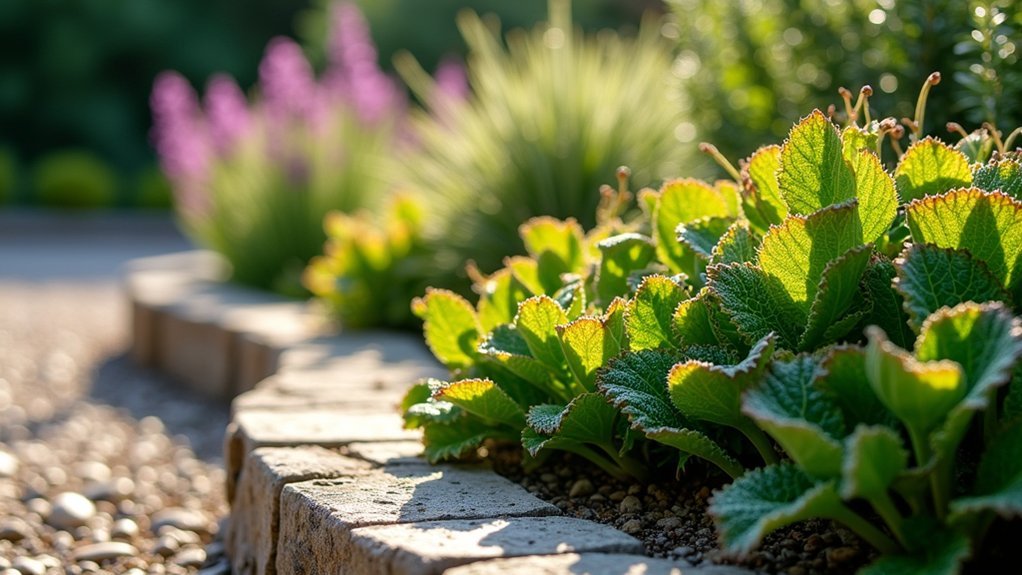
You’ll find that functional water-wise boundaries serve dual purposes by defining garden spaces while conserving precious resources.
Consider integrating permeable pavers or decorative stones that allow rainwater infiltration while creating visually striking separations between different yard areas.
These thoughtful border solutions not only reduce maintenance needs but also showcase how sustainability and beauty work together in modern landscape design.
Practical Edge Solutions
Creating functional borders that conserve water doesn’t mean sacrificing aesthetic appeal in your landscape design. Low-water borders using gravel or permeable pavers provide excellent drainage while defining your garden’s structure.
You’ll find these water-wise landscaping elements particularly effective when combined with drought-tolerant plants that thrive with minimal irrigation.
Consider flexible edging options like recycled rubber or weathering steel that work with natural water flow, preventing pooling and enhancing drainage.
Applying organic mulch within these borders helps retain critical soil moisture while suppressing weeds and improving soil quality over time.
For maximum efficiency, group plants with similar water requirements together in your borders. This smart design strategy not only conserves water but also creates visually harmonious shifts between different areas of your yard.
Elegant Water-Saving Borders
When designed thoughtfully, water-saving borders transform ordinary yard boundaries into stunning landscape features that serve multiple purposes.
Consider weathering steel or recycled rubber edging that allows rainwater to permeate soil while maintaining sophisticated visual appeal.
You’ll enhance your sustainable landscape design by incorporating drought-tolerant plants alongside decorative elements like gabion walls or natural stone borders.
These combinations not only define garden spaces beautifully but also promote effective soil retention.
Your low-water borders can feature permeable materials that prevent water pooling while creating elegant boundaries.
These thoughtful choices greatly reduce your landscape’s water requirements without sacrificing aesthetics.
The result? A yard that demonstrates water conservation principles through boundaries that are both functional and visually striking—proving that eco-friendly gardening doesn’t mean compromising on style.
Frequently Asked Questions
What Is Low Water Landscaping Called?
You’ll hear low-water landscaping referred to as xeriscaping, from the Greek word “xeros” meaning dry. It’s a sustainable approach that uses drought-resistant plants and efficient water management to minimize irrigation needs.
What Is a Low Water Options for Grass?
Low-water grass options include Bermuda and Zoysia varieties. You’ll save water with these drought-tolerant choices that need 50% less moisture. They’re easier to maintain, require less mowing, and have deep roots for better resilience.
What Are the Benefits of Drought-Tolerant Landscaping?
You’ll save money on water bills while conserving resources. You’ll spend less time on maintenance, enjoy healthier soil, support local ecosystems, and create an attractive landscape that’s environmentally responsible—all with drought-tolerant landscaping.
What Is a Low Water Landscape?
A low-water landscape is a design you’ll create using drought-tolerant plants, efficient irrigation, and hardscaping materials. It’s built around native plants that need minimal watering while still maintaining beauty and functionality.
In Summary
Low-water borders aren’t just environmentally responsible—they’re smart landscaping that saves you time and money. You’ll spend less on water bills, reduce maintenance hours, and still enjoy beautiful, vibrant yard edges throughout the seasons. By embracing these sustainable boundaries, you’re creating a resilient landscape that works with nature, not against it. Your yard will thank you, and so will the planet.
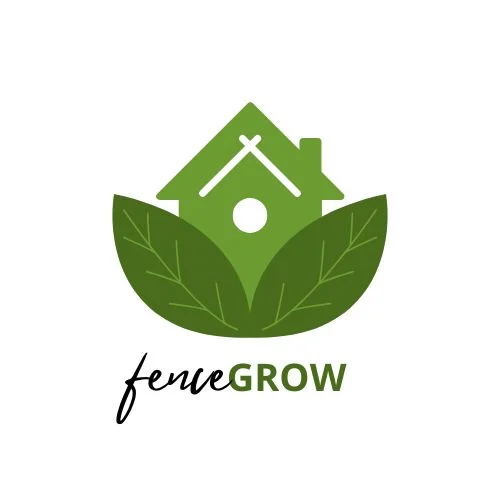
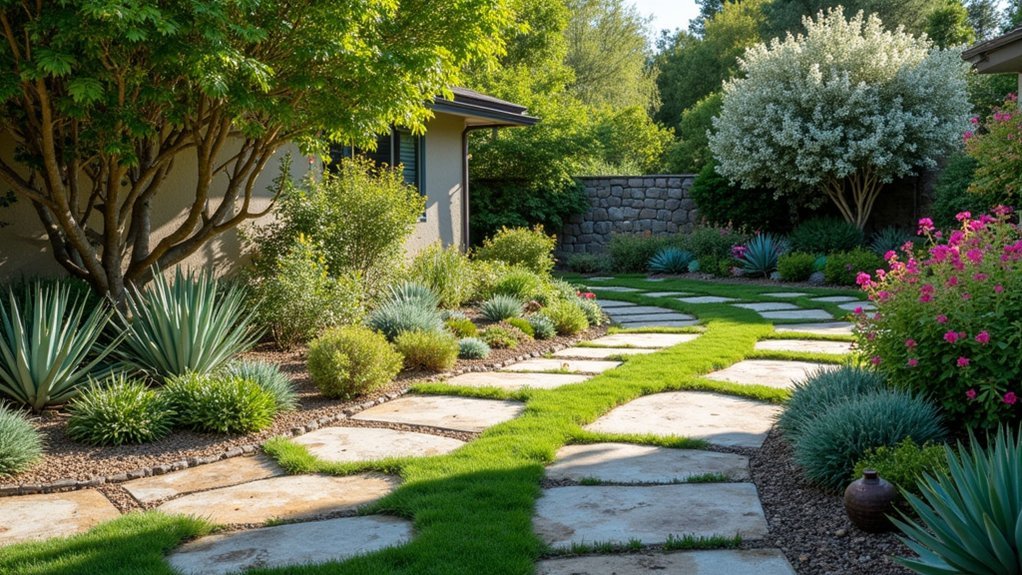
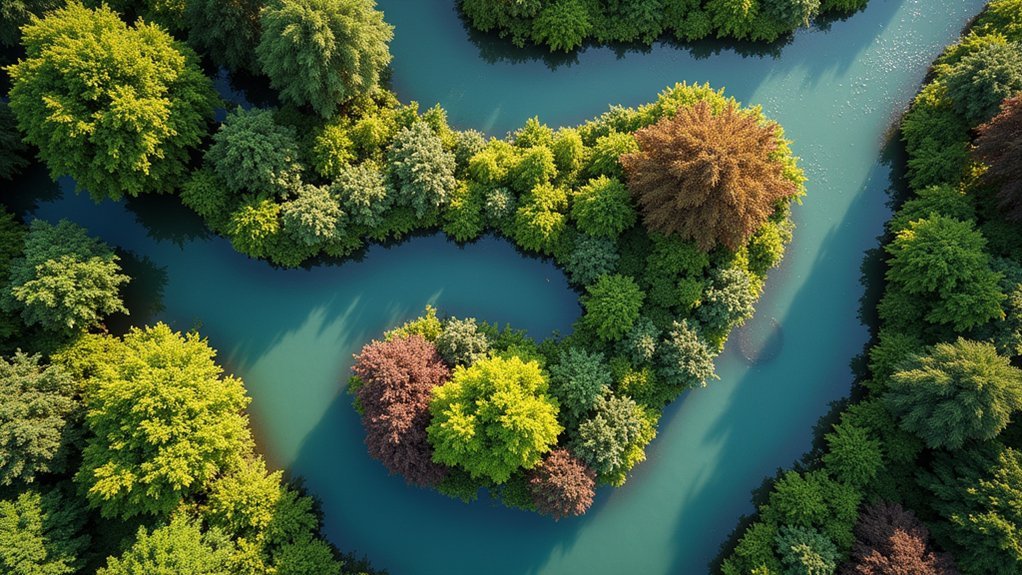
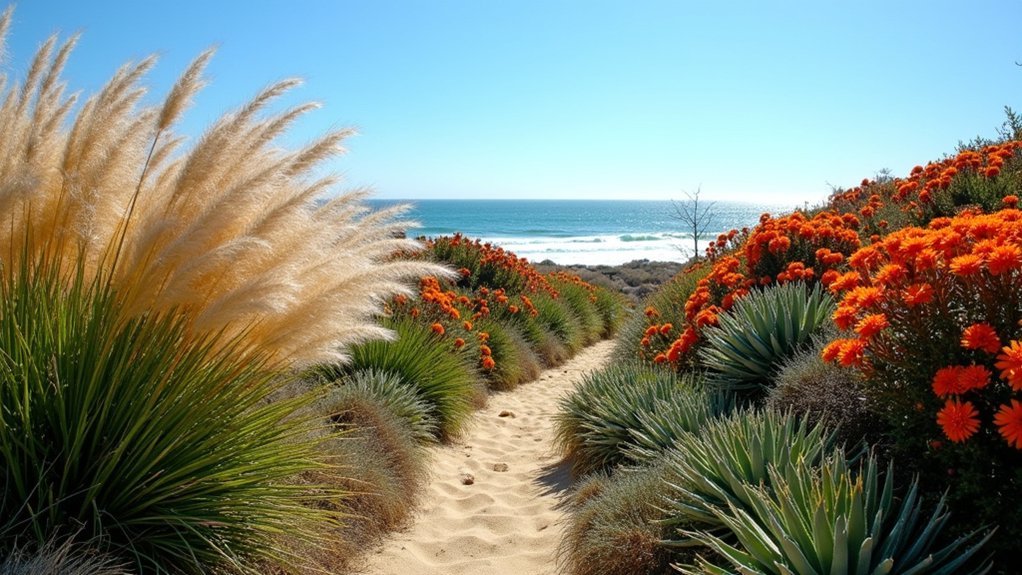
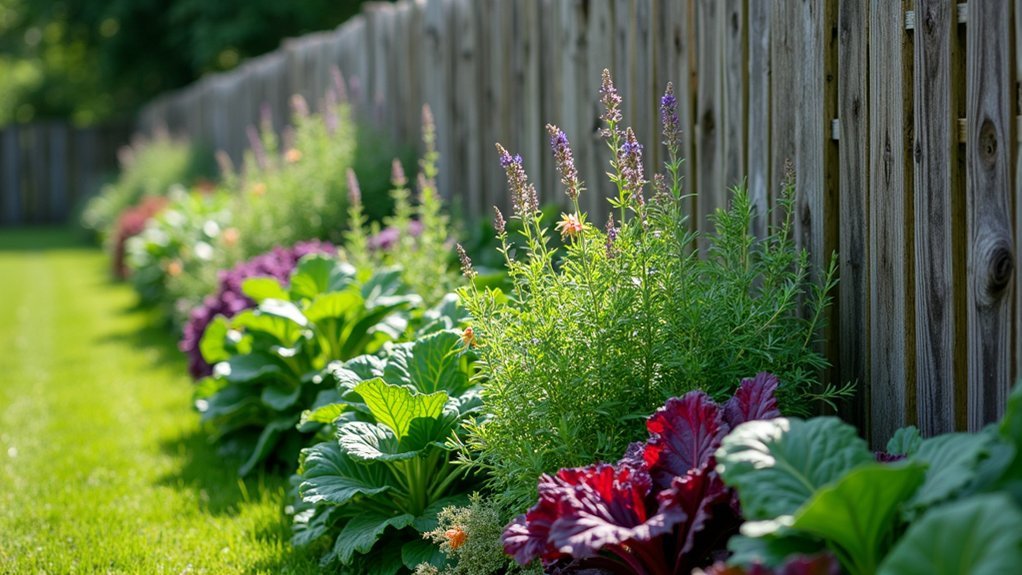
Leave a Reply